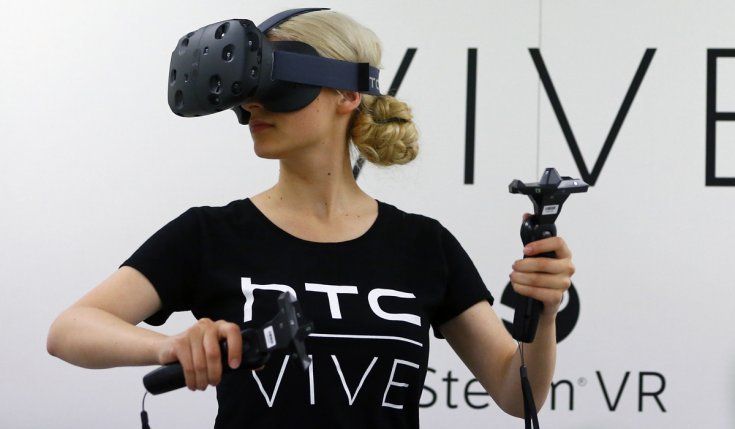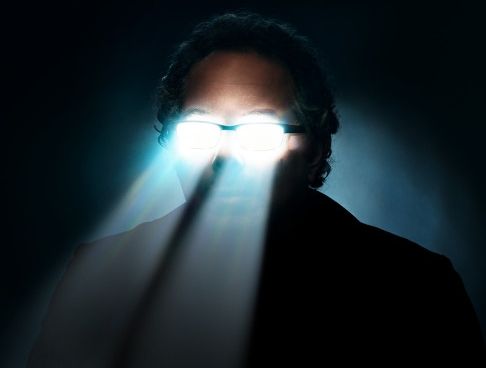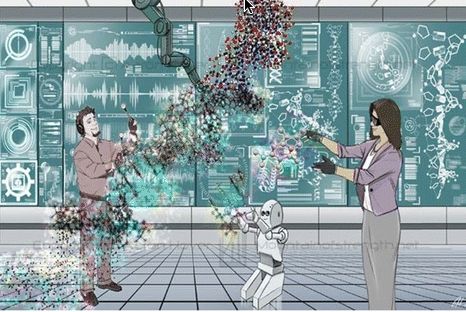“HTC is launching a $100 million accelerator program for startups that want to use its VR technology. The program, called Vive X, will launch in Beijing, Taipei, and San Francisco, with the possibility of expanding to more cities over time.”


“HTC is launching a $100 million accelerator program for startups that want to use its VR technology. The program, called Vive X, will launch in Beijing, Taipei, and San Francisco, with the possibility of expanding to more cities over time.”

Cool
Shipments of augmented reality hardware, which combine real-world and virtual images in the user’s field of view, are forecast by market research firm IDC to ramp up over the next few years. Unlike virtual reality hardware, which tends to be more geared toward gaming, AR hardware is particularly suited for enterprise use, such as architecture, equipment repair and maintenance,
Product design and medical procedures, to name a few. IDC predicted that VR hardware will take off first, but AR will catch up, with combined devices markets seeing hardware shipments exceeding.
110 million units in 2020.
Zotac specializes in making small computers, like their Magnus EN980, which packs a lot of powerful hardware into a tiny space. The company has used their proficiency with making compact hardware and applied it to this virtual reality backpack; it’s wireless and battery-powered, so you can explore an open space without having to worry about tripping on any wires.
The promotional video cites the possibility of tripping on wires as the main reason why you’d want one of these, but that justification might not be enough to sell you on it. Wireless VR headsets don’t exist yet, but they will soon. Optoma has been working on a cloud-based wireless VR headset; the reason that other companies haven’t done that yet is because of concerns about lag or reduction in picture quality. Optoma claims their headset doesn’t have these issues, and if that’s true, they could end up competing handily with Sony and Oculus, both of which require the user to remain plugged in at all times. Optoma’s headset won’t launch for another year, so until then, hardware developers have had to come up with some other ways to go wireless with VR.
Zotac’s backpack seems like one possible solution, and it certainly increases the user’s ability to take VR with them on the go. You could take this thing out to an electricity-free cabin in the middle of nowhere, so long as the battery’s charged up. (Also, most people probably go to remote cabins for reasons other than trying out a cool VR headset, but … shhh.)

I too believe AI could be bigger in the future once the under pinning technology and infrastructure moves to Quantum Technology so that hacking is under control and performance is where it needs to be.
When Mark Zuckerberg thinks about the future, he sees a world that’s dominated by mobile devices and virtual reality, but when Google CEO Sundar Pichai thinks about the future, all he sees is artificial intelligence. He suggested as much during Alphabet’s quarterly earnings call on Thursday, saying that mobile devices and virtual reality will dominate the immediate future, but that they’ll eventually be surpassed in importance by artificial intelligence. However, he didn’t go into detail about what this future will look like.
Artificial intelligence is nothing new at Google, but today we learned just how big a role top boss Sundar Pichai sees AI playing in our future. Answering an analyst query on Google-parent company Alphabet’s Q1 2016 earnings call about how the company is leading innovation, rather than simply adapting to changes in technology, Pichai talked about his role in projecting where Alphabet is going in the next 10 years. He gave a shout out to VR as the hot new platform, and then wrapped up his comments by saying: “In the long run, I think we will evolve in computing from a mobile-first world to an AI-first world.” Earlier in the call he cited Google’s DeepMind AlphaGo super computer defeating a human champion as an extraordinary achievement. He also said the company is investing in AI and machine learning, areas that are taking off and beginning to bear real-world benefits.

The office today for some and near future for others.
Vodafone says collaboration and gaming will fuel future office design.
Young people coming into employment in the next five years will work in a virtual reality office in the future, according to Vodafone.
Speaking at a keynote speech at the UC Expo in London, Peter Terry-Brown, head of product management at Vodafone, said 14-to-16-year-olds worked together in a virtual environment better than an older group did in a traditional office, when the telco decided to compare them.

That astounding sum is especially noteworthy because Magic Leap has not released a beta version of its product, not even to developers. Aside from potential investors and advisers, few people have been allowed to see the gear in action, and the combination of funding and mystery has fueled rampant curiosity. But to really understand what’s happening at Magic Leap, you need to also understand the tidal wave surging through the entire tech industry. All the major players—Facebook, Google, Apple, Amazon, Microsoft, Sony, Samsung—have whole groups dedicated to artificial reality, and they’re hiring more engineers daily. Facebook alone has over 400 people working on VR. Then there are some 230 other companies, such as Meta, the Void, Atheer, Lytro, and 8i, working furiously on hardware and content for this new platform. To fully appreciate Magic Leap’s gravitational pull, you really must see this emerging industry—every virtual-reality and mixed-reality headset, every VR camera technique, all the novel VR applications, beta-version VR games, every prototype VR social world.
Like I did—over the past five months.
Then you will understand just how fundamental virtual reality technology will be, and why businesses like Magic Leap have an opportunity to become some of the largest companies ever created.
Playing the new experience from Fusion, NASA and MIT.

In an open-access paper in the Journal of Artificial Intelligence Education, Winslow Burleson, PhD, MSE, associate professor, New York University Rory Meyers College of Nursing, suggests that “advanced cyberlearning environments that involve VR and AI innovations are needed to solve society’s “wicked challenges*” — entrenched and seemingly intractable societal problems.
Burleson and and co-author Armanda Lewis imagine such technology in a year 2041 Holodeck, which Burleson’s NYU-X Lab is currently developing in prototype form, in collaboration with colleagues at NYU Courant, Tandon, Steinhardt, and Tisch.
“The “Holodeck” will support a broad range of transdisciplinary collaborations, integrated education, research, and innovation by providing a networked software/hardware infrastructure that can synthesize visual, audio, physical, social, and societal components,” said Burleson.
My new story for The Huffington Post on the virtue of reason and asking: Why?.

Image of the future — By Smart Gadget Technology
The human race is on the threshold of so much revolutionary change. It’s mostly due to the emerging field of transhumanism: a social movement that aims to use science and technology to radically modify the human body—and modify the human experience. I get asked all the time: What is the best way to handle such changes—like the merging of humans with machines to make cyborgs? Or spending more time in virtual reality then normal reality? Or biohacker brain implants that let us use telepathy with one another (which eventually will lead us all to be connected via a hive mind)?
I think it’s easiest to let Jethro Knights—protagonist of my philosophical, Libertarian novel The Transhumanist Wager—answer. Below is a modified and condensed version of a speech he gives to the world, near the end of the book:
There are two all-important ways to navigate a correct path in the new transhuman future: The first is to constantly use the utmost reasoning of which our brains are capable while negotiating our way through life; the second is to incessantly question everything.